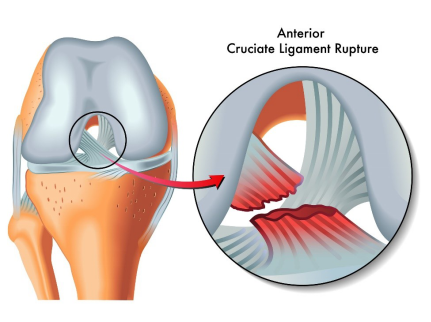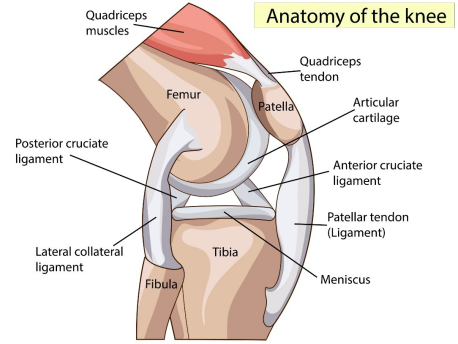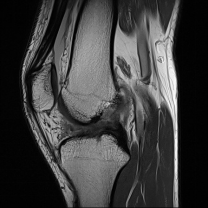Knee injuries such as anterior cruciate ligament injuries (ACL injuries), posterior cruciate ligament injuries (PCL injuries), medial collateral ligament injuries (MCL injuries), and lateral collateral ligament injuries (LCL injuries) are common occurrences in day-to-day life and especially so for those participating in high-demand sports such as amongst others, running, soccer, and cricket.
However, whether you require a surgical intervention will be decided by the severity of the injury.
The article discusses the anatomy of the ACL tear (Anterior Cruciate Ligament tear), the common causes of tears, indicative symptoms, and treatment options.
The ACL tears when excessive force is applied to the knee, usually in sports injury, fall or motor vehicle accidents. It occurs when the knee is twisted or jerked forward beyond a certain limit. ACL tear is common in certain sports such as football and skiing.
The tear can be partial or all the way through the ACL.

There are four ligaments that stabilise the knee joint. Two of them are located outside the knee joint and the other two are located inside the joint (intraarticular). These intraarticular ligaments cross each other in a cross-like formation and are therefore known as cruciate ligaments. The front intraarticular ligament is known as the Anterior Cruciate Ligament (ACL).
This ligament connects the bottom of the thigh bone (femur) to the top of the shin bone (tibia).

People who tear their ACL often hear a popping sound in their knee at the time of the injury.


A torn ACL can be diagnosed by an orthopaedic specialist through:
Partial ACL tears can usually be treated with the help of physiotherapy and specific exercises.
However, a completely torn ACL cannot heal by itself. The knee joint is filled with synovial fluid, which prevents blood clot formation and torn ligaments to come into contact. Therefore, ACL cannot heal without surgery unlike the ligaments outside the joints, which have good healing potential.
If a torn ACL is left untreated, the patient may be predisposed to other knee injuries such as meniscus tear and may develop osteoarthritis.
That said, the need for surgery is dependent on:
Most ACL repair surgeries are done arthroscopically using a small camera and instruments that are inserted through incisions.
The recovery time after an ACL surgery is usually 6 to 12 months. Physiotherapy might be constantly needed during and after the recovery period.
Conservative Treatment
Although ACL cannot heal by itself, many patients will cope well without surgery, especially those with a sedentary lifestyle with low physical demands.
The injury should immediately be followed by rest, ice, compression, and elevation techniques. Analgesics should immediately be given after an ACL injury to reduce pain. Additionally, providing physiotherapy treatment will improve the function of the knee over time.
Without surgical treatment, those with torn ACL should not participate in high demand activities that require jumping and pivoting.
Surgical Treatment
Surgery is recommended for young and physically active patients.
ACL reconstruction is done by replacing the torn ligament with a tendon either from the patient (autograft) or from a donor (allograft).
This surgery is normally conducted with arthroscopy (keyhole surgery).
Arthroscopy is the procedure of inserting a telescope into the knee and is connected to a monitor, so that the inside of the knee can be visualised. Through another small hole (portal), instruments are inserted into the knee to reconstruct the ligament.
After surgery, the patient will have to protect the operated ligament by using crutches or knee brace for about a month. The patient can usually walk unaided after one month and can start jogging after four months. Depending on muscle strength, the patient may be able to resume sports activities after about nine months.
Physical therapy (PT) may be needed during the recovery period to regain the original range of motion and flexibility, improve knee strength, reduce pain and swelling, and to improve balance and coordination.
Although there have been occasional cases of partially torn ACL healing on its own, ACL almost never heal by itself. With accurate placement of graft and adequate rehabilitation, a patient undergoing ACL surgery can anticipate 85% to 90% recovery.
Several studies have shown that muscle-strengthening and proprioception training can reduce the incidence of ACL tear in high physical demand athletes.
It has also been noted that if you have once had an ACL tear, the chances of having it again are high.
Adhering to strict rules of sports and with regular training (like neuromuscular training, and balance training), ACL injury can be reduced in professional sports.

Wait a minute

Wait a minute